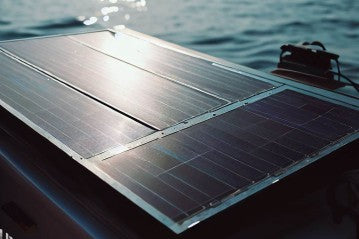
In recent years, there has been a growing interest in harnessing renewable energy sources for various applications. For boat owners looking to embrace eco-friendly practices and reduce their dependence on traditional power sources, installing a 6000 watt solar inverter can be an excellent choice. With this powerful system, you can generate clean energy and power your boat's electrical needs while minimizing your carbon footprint. In this guide, we will walk you through the step-by-step process of installing a 6000 watt solar inverter in a boat.
1. Assessing Power Requirements and Planning
Before diving into the installation process, it is crucial to assess your power requirements. Consider the appliances and devices you will be using on your boat and calculate their combined wattage. This assessment will help you determine the size of the solar panel array and battery bank required for optimal performance.
To illustrate, let's assume you have calculated a total power requirement of 4000 watts for your boat. In this case, a 6000 watt solar inverter would be a suitable choice, providing room for expansion and accommodating peak power demands.
2. Selecting the Right Components
Once you have determined the appropriate power requirements, it's time to select the necessary components for your solar energy system. Key components include solar panels, a charge controller, batteries, wiring, and of course, the 6000 watt solar inverter.
For optimal performance, it is recommended to choose high-quality solar panels capable of generating sufficient electricity to recharge the battery bank. Additionally, select a charge controller that matches the voltage and current rating of your solar panels to prevent overcharging.
For the battery bank, a 200Ah battery is a common choice. This deep cycle battery offers a balance between capacity and size, providing enough power storage for your boat's electrical needs.
3. Installation Process
Now that you have all the necessary components, let's dive into the installation process:
A. Mounting the Solar Panels
Begin by finding an optimal location on your boat to mount the solar panels. Ensure the panels receive maximum sunlight exposure throughout the day. Clean the mounting surface and secure the panels using suitable brackets or clamps. Make sure the panels are angled appropriately to maximize energy production.
B. Installing the Battery Bank
Connect the 200Ah battery bank to the charge controller using appropriately sized cables. It's crucial to follow the manufacturer's instructions for wiring and safety precautions. Ensure all connections are secure and properly insulated.
C. Connecting the Inverter
Connect the 6000 watt solar inverter to the battery bank using heavy-duty cables capable of handling the system's power output. Pay attention to the polarity and ensure proper connections. It is advisable to use a fuse or circuit breaker to protect the inverter and the system from overload or short circuits.
D. Testing and Troubleshooting
After completing the installation, it's important to thoroughly test the system. Check all connections, ensuring they are secure and tight. Verify that the solar panels are generating electricity and charging the battery bank. Test the inverter by powering various devices to ensure it is functioning correctly.
If you encounter any issues during the testing phase, refer to the product manuals or consult a professional to troubleshoot and rectify the problem.
Conclusion
Installing a 6000 watt solar inverter in your boat is an excellent way to harness clean and renewable energy to power your electrical needs. By carefully assessing your power requirements, selecting the right components, and following the installation process, you can enjoy the benefits of solar energy while reducing your environmental impact.
Remember, proper maintenance and periodic checks are essential to ensure the longevity and efficiency of your solar energy system. Embrace the power of the sun and embark on a greener boating journey with a 6000 watt solar inverter and a 200Ah battery.

0 comments